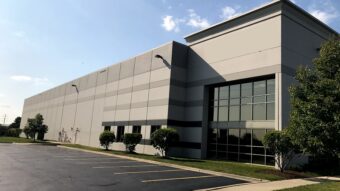Jeanne Huntsman and Lauren Huynh know just how much it can cost owners to operate an inefficient building. The high energy costs can cut deeply into a building’s profits.
Huntsman and Huynh not only know this, they can help building owners and developers take the steps necessary to reduce their energy costs. Both are project managers for Minnetonka, Minn.-based The Weidt Group, an energy consultant that works with building owners, design teams, manufacturers and utilities to help these clients design and maintain energy-efficient buildings. Huntsman works in Iowa for The Weidt Group, while Huynh works from the company’s Minnesota location.
The pair also help companies boost the energy efficiency — and lower their energy bills — at existing buildings, and provide the measurement and verification tools these owners need to determine how efficient their existing spaces really are.
Huynh and Huntsman recently spoke with Midwest Real Estate News about the increasing focus that building owners — whether during the construction phase or after a facility has opened — are placing on lowering their energy bills and boosting their properties’ efficiency levels.
Midwest Real Estate News: When developers are working on their new buildings – or even when they are building spec projects – are they focusing more today on energy efficiency and ways in which they can lower the future energy bills of their new buildings? Jeanne Huntsman: We do see quite a few new construction projects that are going through the program. It can sometimes be difficult to get spec buildings involved in the process here in Iowa. Developers of spec buildings are usually focusing on so many other factors. But it is important for them to realize that having an energy-efficient building can increase the marketability of their projects. We are seeing a little bit of an increase in spec buildings going through our program. But I can’t say whether that’s because of an increase in the desire by developers or whether it’s because we’ve been doing more marketing of our services. Lauren Huynh: In Minnesota, new buildings have to meet certain sustainability requirements. So we are seeing more engagement with spec projects here. The developers know in advance that they have to design a green building, so they try to engage us as early as possible. I certainly haven’t seen any decreases in the number of spec projects we’ve been working with here. More upfront design teams and owners are reaching out to us to see what services we can provide to help them meet their targets and goals for the project. Huntsman: That’s especially true of there are state incentives involved. Many times, developers have to meet certain energy-efficiency guidelines to qualify for financial incentives. They’ll work with us as a way to qualify for those incentives.
MWREN: In general, are commercial developers and owners more aware of how important it is to build energy-efficient buildings? Do they understand the bottom-line savings such buildings can provide them in the form of lower utility bills? Huntsman: They are more conscious of that today. In Iowa, we are seeing a lot of developers who have worked in the Chicago market proposing projects for our area. Energy efficiency is a very big issue in Chicago and Illinois. So when these developers come to our market, they’re already thinking about sustainability issues. Sustainability is important in Iowa, and it is becoming more interesting to the developers doing business here. Huynh: In Minneapolis, starting this year public buildings larger than 25,000 square feet have to monitor and disclose water and energy use data. Starting next year, private buildings will have to start doing the same. Buildings need to have their own energy benchmarking and facilities-management tools. So in this area, building owners do see the benefits to energy efficiency.
MWREN: It seems that all building owners should embrace energy efficiency. It results in lower energy bills. What are the hurdles that keep more owners and developers from putting energy-efficiency strategies in place? Huntsman: There is often a concern about cost. Building owners or developers are worried about spending too much on energy-efficiency measures. But we can show them how short the payback period can be. By reducing their energy bills, these clients can save enough each year to quickly pay back any costs. And once the costs are paid back, they can still enjoy the yearly energy savings. Time, too, can be an issue. It takes time to think about and build energy efficiency into a building’s design. It takes time to do that instead of doing the same old thing that you did in your last project. That’s where incentives can help. They can encourage developers and owners to take the time. Huynh: Developers might face schedule constraints if they are working on a fast-track project. These constraints can make energy efficiency seem like less of a priority. They are focusing instead on getting a project done on deadline, and they might think that focusing on energy efficiency can slow them down. That’s why we always try to show our clients that payback on energy efficiency usually happens quickly and that it doesn’t have to add too much time to a project to incorporate energy-efficiency measures.
MWREN: Are your clients ever surprised at how short the payback period can be? Huntsman: Yes. Things that developers or owners might have thought were too expensive might prove in the long run to be more lucrative than they thought. Huynh: The information we provide regarding payback helps in the decision-making process for our clients. We provide tangible numbers that help them make decisions on whether energy-efficiency measures are a solid financial choice.



